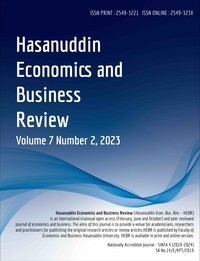Abstract
This study examines the implementation of risk management at Hasanuddin University in its efforts to realize Good University Governance (GUG) principles, such as transparency, accountability, and efficiency. Using a qualitative approach, data were collected through in-depth interviews, document analysis, and observations involving key university stakeholders. The findings show that while the university has established formal risk management frameworks, several challenges persist. These include resource limitations, inconsistent communication between departments, and a lack of a risk-aware culture. Despite these obstacles, the implementation of risk management has contributed positively to enhancing transparency and accountability by providing systematic processes for identifying, assessing, and mitigating risks. However, full integration with the broader governance system remains incomplete. To fully leverage risk management in supporting GUG principles, the university must promote greater stakeholder involvement, improve resource allocation, and ensure stronger alignment between risk management and governance strategies. These findings offer valuable insights for higher education institutions aiming to enhance governance through effective risk management.References
Aspan, H. (2017). Good corporate governance principles in the management of limited liability company. International Journal of Law Reconstruction, 1 (1), 87-100. http://dx.doi.org/10.26532/ijlr.v1i1.1637
Creswell, J.W. (2013). Qualitative inquiry and research design. Choosing among five approaches. London: Sage.
El Junusi, R. (2020). COSO-based internal control: Efforts towards good university governance. Journal of Islamic Accounting and Finance Research, 2 (1), 27-50. https://doi.org/10.21580/jiafr.2020.2.1.4773
Hopkin, P. (2018). Fundamentals of risk management: Understanding, evaluating and implementing effective risk management.
Ichwan, A. M., Haliah, H., & Haerial. (2023). The influence of good corporate governance and corporate social responsibility on tax aggressiveness. Accrual: Contemporary Journal of Business and Accounting, 16 (2), 145-152. https://doi.org/10.26487/akrual.v16i2.26415
ISO. (2018). ISO 31000:2018 risk management - Guidelines. International Organization for Standardization. https://www.iso.org/standard/65694.html
Keban, Y. T. (2017). Risk management: A neglected vital instrument in public administration in Indonesia. Management Research and Practice, 9 (4), 5-21
Miles, M. B., Huberman, A. M., & Saldaña, J. (2014). Qualitative data analysis: A methods sourcebook (3rd ed.). SAGE Publications.
Oliveira, K., Méxas, M., & Meirino, M. (2019). Critical success factors associated with the implementation of enterprise risk management. Journal of Risk Research, 22 (8), 1004-1019. https://doi.org/10.1080/13669877.2018.1437061
Tekathen, M., & Dechow, N. (2013). Enterprise risk management and continuous re-alignment in the pursuit of accountability: A German case. Management Accounting Research, 24 (2), 100-121. https://doi.org/10.1016/j.mar.2013.04.005
Yin, R. K. (2018). Case Study Research and Applications: Design and Methods (6th ed.). SAGE Publications.
Authors who publish in this journal agree to the following terms:
- The journal holds the copyright for each article published with work licensed simultaneously under a Creative Commons Attribution 4.0 International License, which allows others to share the work with an acknowledgement of the authorship and early publication of the work in this journal.
- Authors must agree to the copyright transfer agreement by checking the Copyright Notice column at the initial stage when submitting the article.

